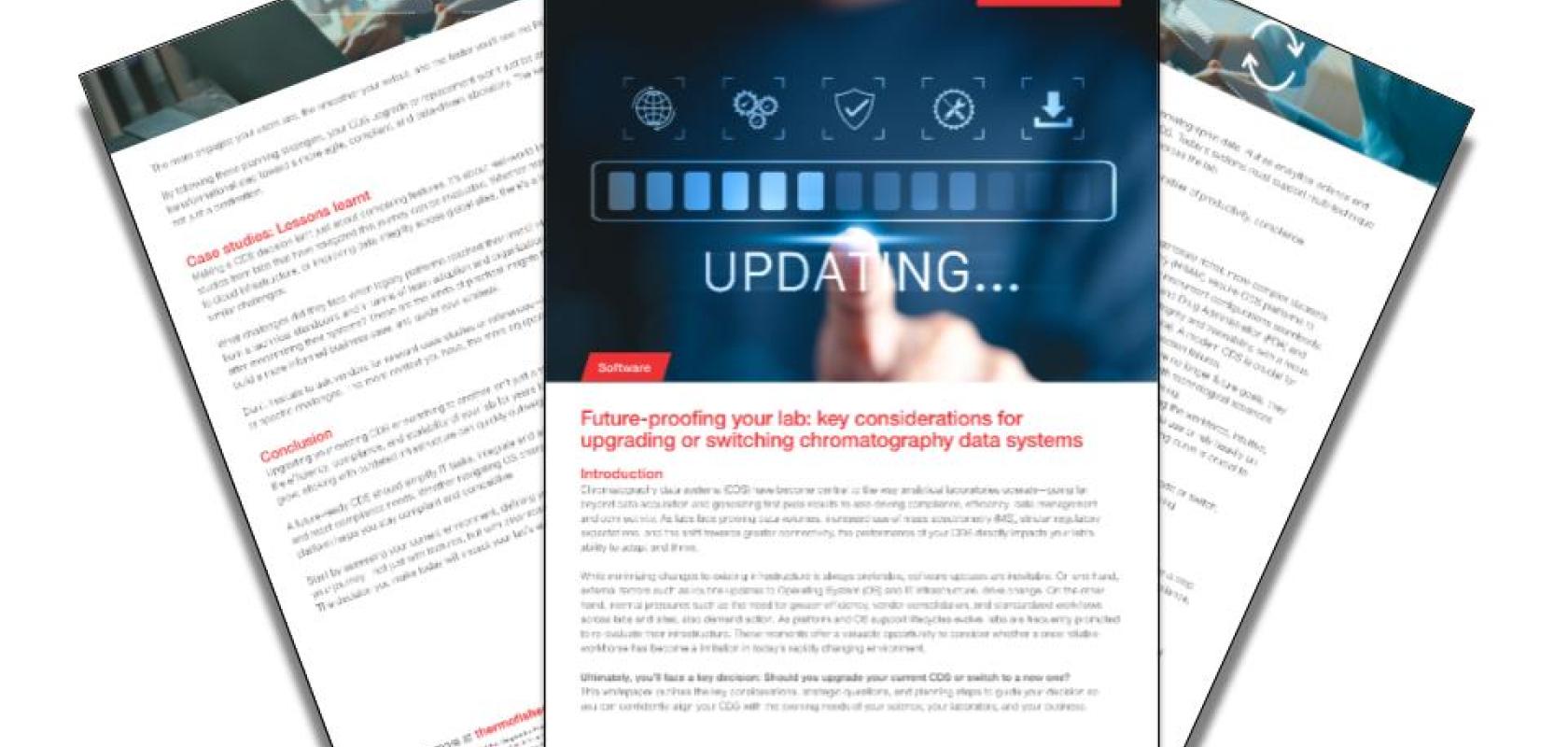Future-proofing your lab: key considerations for upgrading or switching chromatography data systems

Future-proofing your lab: key considerations for upgrading or switching chromatography data systems - A Thermo Fisher White Paper
As technology evolves and regulatory demands increase, an outdated CDS could be holding your laboratory back.
This comprehensive White Paper guides you in determining whether upgrading your existing system is sufficient or if transitioning to a new CDS is the better, future-ready option.
Who should read this white paper?
This resource is essential for laboratory managers, quality assurance professionals, IT directors, and scientific leaders in regulated industries, particularly those working in pharmaceutical, biopharmaceutical, clinical, environmental, and food safety testing environments. Whether you're facing an impending Windows® operating system upgrade, grappling with increasing data volumes, or preparing for regulatory inspections, this guide provides the strategic framework you need to make an informed decision.
Why does this matter now?
Your CDS is no longer simply a data acquisition tool, it's a strategic enabler of productivity, compliance, and laboratory-wide integration. With experienced scientists retiring, mass spectrometry becoming more routine, and regulatory bodies placing unprecedented emphasis on data integrity and ALCOA+ principles, the performance of your CDS directly impacts your laboratory's ability to adapt and thrive. The shift towards cloud connectivity, remote access, and digital transformation means that decisions made today will shape your laboratory's capabilities for years to come.
What you'll discover
This white paper provides a structured, criteria-based evaluation framework covering six critical factors: system compatibility and hardware requirements, mass spectrometry workflow support, compliance and data integrity capabilities, user experience and change management, integration with laboratory systems, and total cost of ownership analysis.
You'll gain expert insight on identifying the key indicators that suggest it's time for change, understanding the hidden costs of maintaining legacy infrastructure, and recognising when an upgrade is merely a "band-aid" solution. The guide includes a detailed comparison matrix to help you assess whether upgrading or switching is right for your specific circumstances, alongside practical planning strategies for budgeting, vendor evaluation, implementation, and stakeholder engagement.
Real-world considerations for managing validation, minimising disruption, and ensuring user adoption are woven throughout, ensuring you're prepared not just technically, but organisationally.

